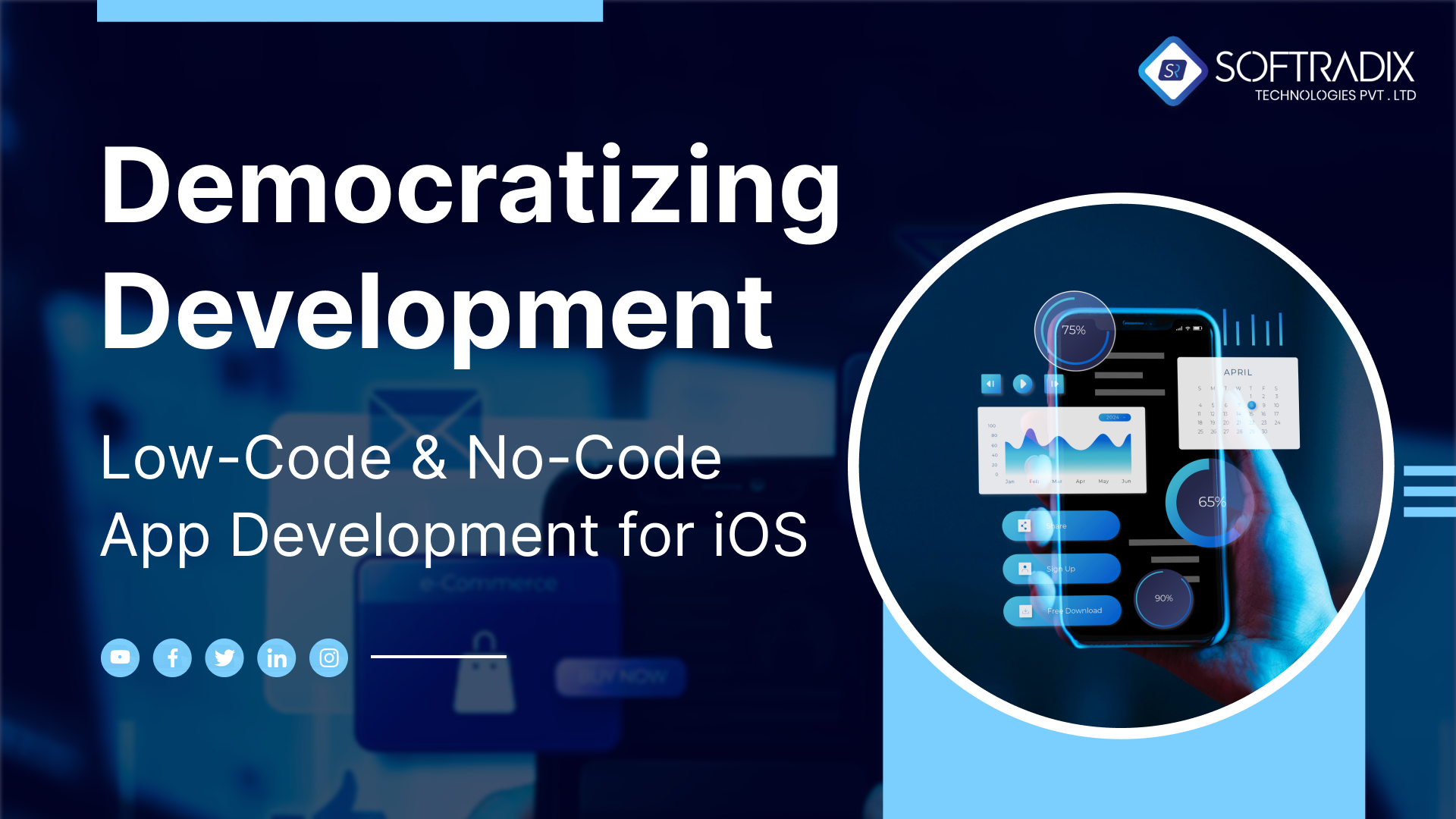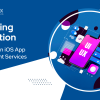
In today’s world, generating and implementing applications is the need of the business world. More often, the creation of an application is a time-consuming process that demands adequate expertise in programming. Yet, everyone can do development, even with the help of low and no code development tools and technologies. These tools make it possible to develop usable applications with very little coding skills. It makes businesses more democratized and allows them to adapt to market needs faster and put in place the required innovations.
The Evolution of App Development: A Focus on iOS
Previously, it was very complex to create an application since one has to have adequate knowledge in programming. Xcode IDE is very complex, and developers have to strictly adhere to the testing procedures. Thus, while it can be seen that this traditional approach to compiling and updating the data was rather solid, it took a great deal of time and effort.
With this background, the arrival of low-code and no-code platforms has transformed the way of developing, particularly for iOS app development. These tools offer ready-made templates, drag and drop options and simple logic building options. Users with no coding skills or very low levels of coding knowledge can create working apps. This shift has made the door open for a larger percentage of the population, now they can develop apps.
What Low & No-Code Platforms Are?
Low Code Platforms: These platforms need some basic understanding of coding. Yet, it reduces the amount of manual coding! They provide visual development tools that allow users to build applications. Developers can create custom functionalities by writing snippets of code. But, the bulk of the work is done through visual tools.
No-code Platforms: These platforms are for the users who have no coding experience at all. It offers a visual interface, users are able to drag/drop elements to create applications. Logic and workflows are maintained automatically by system, making it easy for anyone.
Benefits of Low-Code/No-Code Platforms for iOS Development
- Accessibility: With low/no-code, many people have fully interactive real-time applications. This fosters creativity hence people from any background can bring in their perspective into the organization.
- Speed: Such platforms facilitate the rate at which these developments are made. Innovative applications can be developed in weeks or even days in case of using ready-made templates. Therefore, this rapid development cycle is strategic for the firms that must adapt to their market.
- Cost-Effectiveness: Native development is often costly due to the hiring of professional developers and many iterations that are often needed for its flawless functioning. Low/no-code as a tool also helps in cutting down costs since it does not require professional programming skills. In fact, to carry out all the testing there are built-in tools provided for in the testing process.
- Flexibility: These platforms come up with a variety of pre-built templates as well as integration options. Enabling the development of applications where adjustments can be made depending on the requirements of a specific case. The freedom is beneficial since it enables specific businesses to customize their official apps to feature working procedures and guidelines.
- Empowerment: The platforms allow the non-developer employees to fix issues or enhance processes, which affect organizational operations. That, in turn, enhances productivity and satisfaction levels among employees.
Popular Low-Code & No-Code Platforms for iOS
Several platforms have emerged as leaders in the low/no-code as each offers a unique set of features. Here are some of the most popular options for iOS app development:
- OutSystems: OutSystems is a low code software that can be used to design web and or mobile applications. It has starter templates, and applications that have libraries for developing sophisticated tools without a great deal of coding.
- AppSheet: AppSheet which is by Google enables users to create mobile apps from other sources of data. Its data integration power is highly appreciated by organizations; thus, numerous companies use it.
- Bubble: Bubble functionality is primarily located in web application development to a coding interface. However, this solution can also be used for mobile apps, offering extensive customization options and access to a large client base.
- Adalo: Adalo is one of the no-code platforms and focused exclusively on mobile applications designing. It has a built-in interface to create the cross-platform apps and concentrates more on the design of the UI.
- Thunkable: Thunkable is a no-code application development software for making iOS applications. It has the drag-and-drop functionality, it has real-time collaboration features; hence, it is ideal.
Real-World Applications and Case Studies
The influence of low-code and no-code platforms on a wide range of industries. Here are a few examples of how these platforms are being used to democratize iOS app development:
- Healthcare: A non-profit firm used AppSheet to create a mobile app for managing data. The app was made by their own staff with zero coding experience. These platforms enable them to provide better care without relying on external developers.
- Education: A school makes use of Thunkable to build their own app to track student performance. Teachers and administrators were able to create and maintain the app themselves. It promotes improved communication and efficiency in a school.
- Retail: A small business owner used Adalo to develop a mobile app for their retail store. The app includes features such as online shopping, order tracking, and customer feedback. It helps businesses to adapt to flexible market demand.
Challenges and Considerations
The discussion about low/no-code platforms shows their advantages, but like any tool they are not without pitfalls. Make sure to consider these factors while using these platforms for creating apps:
- Scalability: Apps built on low-code/no-code platforms may face limitations in scalability. As the app grows, it requires more complex features. It may become necessary to transition to a more traditional development approach. As the app grows and requires more complex features, it may become necessary to transition.
- Customization: These platforms offer extensive customization options to users. Yet, there may still be limitations compared to fully custom-coded apps.
- Security: Ensuring the security of apps built on low/no-code platforms is crucial, especially for apps handling sensitive data. It’s important to choose platforms that focus on security and provide robust security features.
- Vendor Lock-In: The downside to relying on a single platform is, it creates vendor lock-in and it becomes challenging to swap to another platform or style of doing things. Nevertheless, one must contemplate the implications of such dependency in the future.
The Future of Low-Code & No-Code Development
The Low code mobile app development and No Code Application are perceived to signify the beginning of the new era towards the mobile application development democratization process. With time, these platforms should be enhanced with much more features, better interfaces, and most importantly better interfacing with other applications. It is predicted that in the future, app development will involve the use of low code/no code platforms in conjunction with conventional development strategies.
Furthermore, in the coming future, AI and Machine learning are also applicable to the low-code/no-code development. With the help of AI, users will be able to develop smarter applications; therefore, the amount of coding required will be even less.
Conclusion
The introduction of low or no-code apps creates a shift in the manner that people develop apps especially through the use of easily accessible tools. These platforms help the general public to participate in the development of apps hence encouraging innovation, improved organization and personal as well as business productivity through solving their own problems. Hence, with the advancement in technology, the prospects for success in low-code and no-code application development are infinite. Today it is possible to build strong iOS applications regardless of whether you are a small business owner, a healthcare worker, or a teacher.






